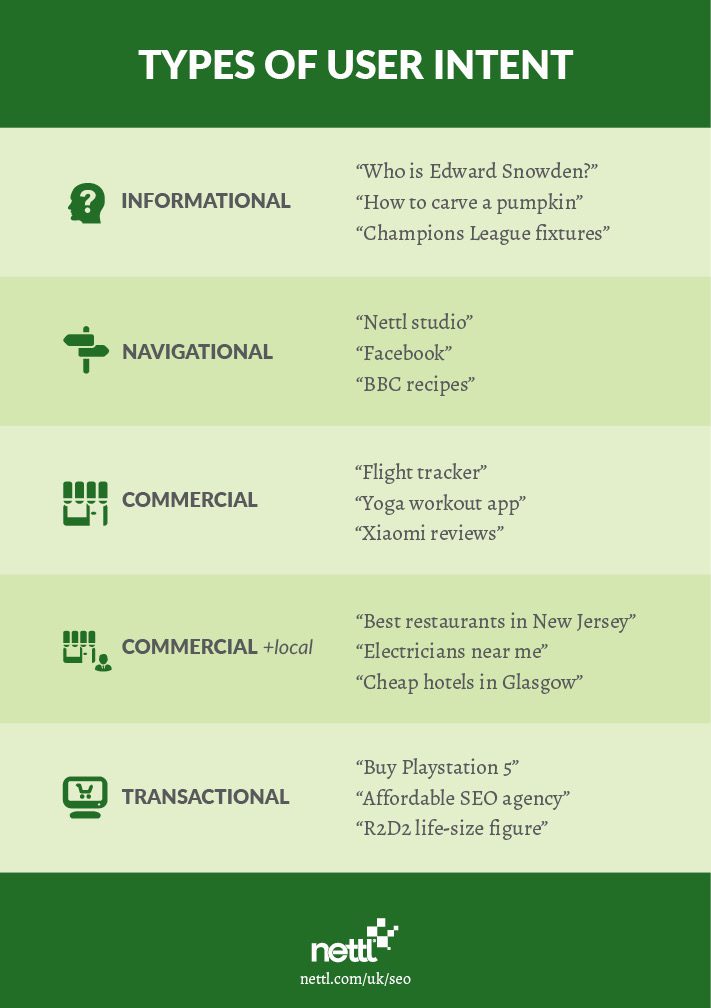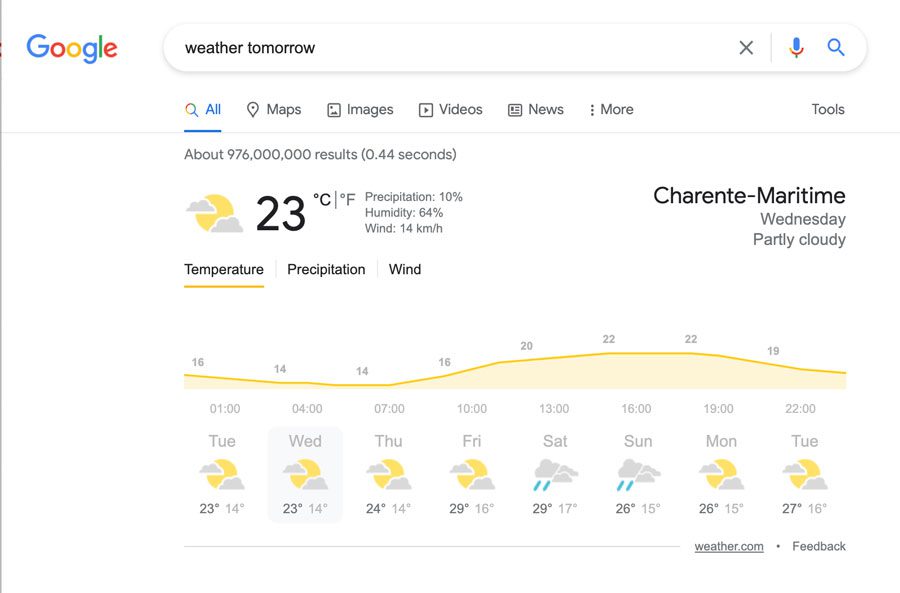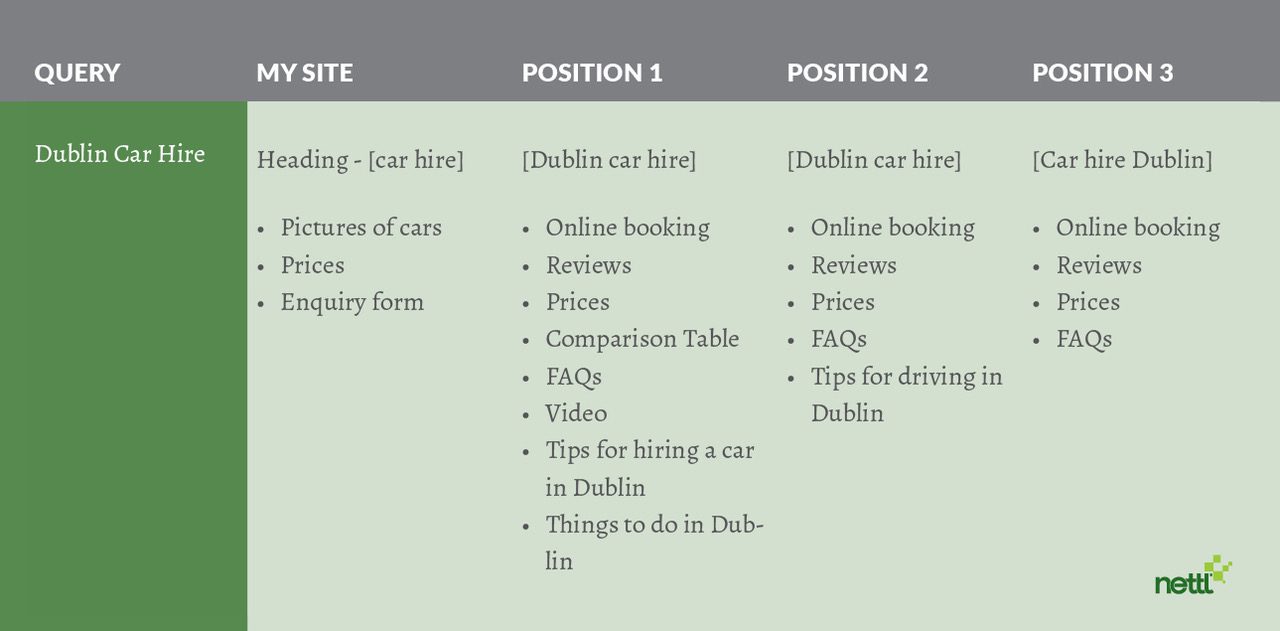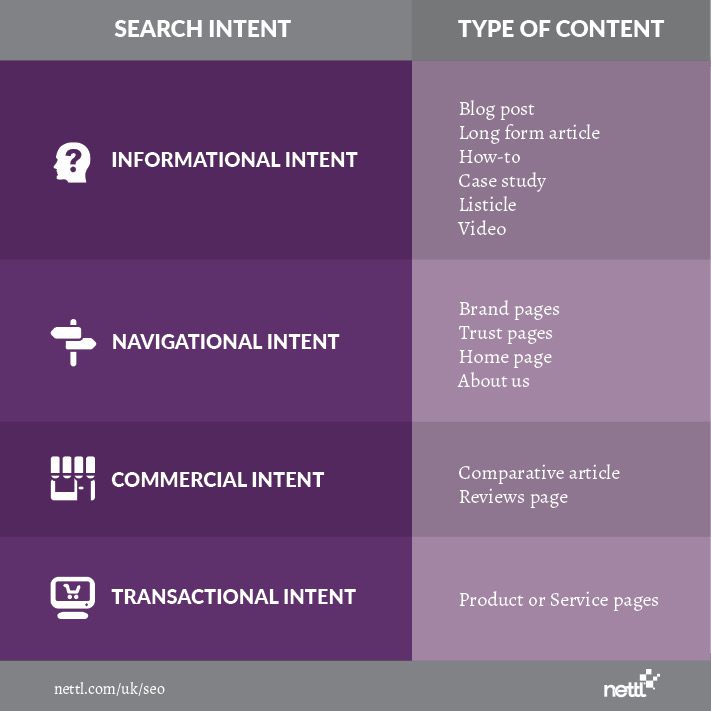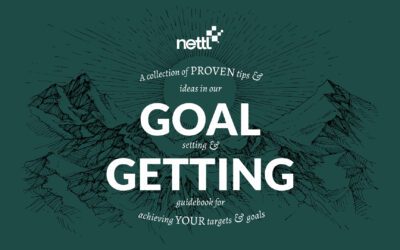“Are you looking for anything in particular?”
That quintessential high-street highball should be the question on your lips when thinking about your website visitor.
Why? Because it’s a direct route to uncovering SEARCH INTENT.
As a business owner or marketer, you should be OBSESSED with search intent.
It’s one of the most effective, yet simplest, SEO tactics to implement yourself.
You don’t even need an SEO geek to do it.
You just need to get your thinking cap on and roll your sleeves up.
You’ll need to know a bit about your business. Check.
And more importantly, understand your website visitor. Check.
But armed with that knowledge, and a little bit of Googling, you can do it yourself.
So let’s get started.
What is search intent?
Search Intent (or User Intent) is the why behind a search query.
Why did the person make this search? To learn? To buy? To find a particular website?
It’s what people want to achieve from their visit to your website.
Why is Search Intent important?
Because it’s the job of a search engine to recommend the most relevant results for the user’s query.
Matching search intent with what your content delivers is the key to making your website relevant.
And in 2021, relevance is EVERYTHING.
You can have all the bucketloads of backlinks you like.
But if your landing page isn’t relevant you’re not going to rank at all. Full stop.
Aligning your content with search intent helps your website rank higher.
Aligning your website experience with search intent will help your website convert more visits.
How does Google know what my intentions are?
It pays attention.
Specifically to things like Pogo Sticking. And Bounce Rate.
These signals show Google how happy (or not) people were with a result, and helps them calibrate their intent compass.
Types of user intent
If you’ve not already guessed by now, Google is big on user intent.
They have lots of guidance on it.
Because Google wants to help us help them help their user.
The 4 types of user intent listed below are from the horse’s mouth.
Meaning we should pay close attention.
- Information
- Navigation
- Commercial
- Transactional
#1 INFORMATIONAL
As the name suggests, these are searches by people looking for information.
An informational search doesn’t always have to be a question.
‘Weather tomorrow’, for example.
That search query will also just give you the information you want, quickly.
Google won’t show you a bunch of websites with detailed guides on how climatology works.
But often when a question is asked, more in-depth explanation is often desired.
A set of steps or a video, perhaps. And that is where your website content can help.
Some examples include
- Who is Edward Snowden?
- How to carve a pumpkin
- Champions League fixtures
#2 NAVIGATIONAL
Navigational searches are where users are looking for a particular website they want to visit.
This works a little like a branded query search because the query usually includes the brand name.
People like to do this because it’s quicker to type this into Google and click the (hopefully) top result, rather than type in the full URL (if you even know it).
Some examples include
- Nettl studio
- BBC recipes
#3 COMMERCIAL
Search queries with commercial intent are where the user is looking for a specific type of product or service but has yet to decide what solution is right for them.
They’re likely to be looking at reviews and comparisons to weigh up their options.
- Flight tracker
- Yoga workout app
- Xiaomi reviews
An important sub-section of Commercial is
COMMERCIAL +local
Where the searcher is looking for something to buy, or for a service, but in a specific geographical area.
- Best restaurants in Cheltenham
- Electricians near me
- Cheap hotels in Dublin
#4 TRANSACTIONAL
The searcher is looking to make a purchase. They probably already know exactly what they want to buy. They just need to find the best place to buy it from.
These are great queries to try and rank for because theoretically, these people are further down the funnel and closer to checkout.
Catching people at this moment in their buying journey tends to mean you’ll enjoy a higher conversion rate.
On the flip side, this stage can be quite ruthless.
These are also often the most competitive search terms to rank for.
And very little opportunity to build brand loyalty so late in the day.
Bonus:
Here are a few short transactional conversion tips:
- Go niche with your product and descriptions.
- Look instantly credible
- Use plenty of social proof
- Display clear delivery and returns info
Here are some more examples of a few transactional search queries.
- Buy Playstation 5
- Affordable SEO agency
- R2D2 life-size figure
Obviously, search intent is not ALWAYS this clear-cut.
Sometimes it’s a bit of a mix. Like rice and chips.
In some situations, you may find that the same search query can often almost equally be spread across a few types of intent.
When this happens, you will often see Google’s SERP (Search Engine Results Page) show a few of each type.
In such cases, you should build appropriate individual landing pages for each type.
It is also worth combining tactics in your listing.
The example above for life insurance includes
- A brand mention in the title (Navigational),
- A price and quote calculator (Transactional),
- And in-depth explanation on ‘What is term life insurance?’ in the sitelinks (Informational)
So what can you do to optimise for Search Intent?
#1 Do some competitor analysis
Look at the other results already ranking for your desired search query.
What kind of content is on their landing page?
How does your content stack up in comparison?
Do they feature any information that your site is lacking?
Check out this table below for a quick example comparison.
#2 Do some customer research
Check out the ‘People also ask’ section on a Google Search Results Page for your query.
Are you covering these points in your content?
Consider a section, with a heading matching each of these questions.
Here are some other tools to help you find more informational keywords:
answerthepublic.com
reddit.com
quora.com
#3 Create the right type of content for the intent
The customer intent that Google recognises should guide the type of content you have.
For example:
Informational intent –
Blog post, long form article, how-to, case study, listicle, video
Navigational intent –
Brand pages, trust pages, home page, about us.
Commercial intent –
Comparative article, reviews page
Transactional intent –
Product or service pages
It’s not just about you
If you take one thing away from this, it’s the concept that you should design your website around what your users want to see.
Not just what you want to say about your business.
For example, take this Venn diagram from Steve Krug’s book ‘Don’t make me think’.
On the left we have
What the university thinks users visit their website for
vs
What the users are really looking for
Businesses often make exactly the same mistake.
Nettl Academy
If you’re interested in a deeper dive into this topic, you can watch our webinar on the topic below.
Or access even more free SEO tutorials at our Nettl SEO Academy.
Short of time?
As we mentioned, optimising your website for Search Intent is something anyone can do.
You don’t have to be an SEO geek to make significant improvements.
What you do need, though, is time. Something most owners, managers and marketers have precious little of.
If you’d like to work more efficiently, let us do the heavy lifting.





